

SOUTHEAST
March 2007

1 of 3


SOUTHEAST
March 2007


1 of 3
Well, eventually it was bound to happen.
True, we were aiming for harder-to-find targets like Indigos and Rattlesnakes in natural habitat
―
we hardly hit
any tin sites
―
but my brother Ron and I were in the company of professional herpetologists, in prime habitat, with
good weather, and still we nearly got skunked. In the first five days we saw only six snakes . . . and three of those
were Racers! It ended a bit better, but that was between six of us searching for three more days, and most of those
finds were under arrays of artificial cover at a study site.
So, the best highlights of this trip turned out to be people rather than herps. Most were scientists, which always
appeals to me. Perhaps it’s the education I gain learning from experts, or the satisfaction of contributing to field
research, or maybe it’s the vicarious thrill of herping with folks who are living my childhood dream. But mostly, I
think it’s because, in my experience, these people are just not normal.
Herping is a peculiar hobby to begin with (Exhibit A ) but it takes a special kind of person to do it
professionally (Exhibit B ), and I’ve been privileged to join quite a few in the field. This time around I met several
new researchers and reconnected with others I’ve herped with before, and the biggest bonus was discovering what
good company they were and what additional obscurities we had in common (who knew there were other herpers
familiar with DADGAD?). All in all, not many species or stories, but it was still a great time with some fine folks
(who shall remain nameless to avoid inadvertently revealing by association the location of their study sites).
Our grand total from Day One, in the North Carolina sandhills:
The next day finds us in Georgia searching for Indigos with a group led by one our herpetologist friends. The
morning begins with a tease as we immediately find a Gopher Tortoise burrow with fresh snake tracks leading from
the hole. We canvass the entire vicinity without success, then move on to another area, only to discover new tracks
going down the hole when we return! Grrr . . .
Catch a few glimpses of tortoises poking out of their burrows, but they disappear as soon as we approach.
Besides Fence Lizards, that’s all we find after a full day in the field. On the drive back we flip a few boards which
produce a Tantilla and a Racer, our only finds for Day Two:
On Day Three Ron and I drive to another site to continue the hunt for Indigos. En route we come across this
Moccasin. You can tell from the self-satisfied smile that he knows he will be our only snake of the day.
We arrive at a perfect spot, a sand ridge covered with active burrows, but the best we can do is this tortoise who,
in keeping with the spirit of her fellow herps, simply ignores us.
The following morning we hit the same site hard, inspecting virtually every burrow on the ridge. Twice. Then
once more. We see nothing but a single salamander and a few more tortoises.
We finally surrender and retreat north to South Carolina. Along the way we pass an abandoned barn that
supplies our token snake for Day Four:
Day Five is spent in the Lowcountry assisting a field research project on Canebrake Rattlesnakes. After hours of
intensive search, we proudly contribute this single, totally irrelevant data point:
Our researcher is thrilled. As to Canebrakes, we can’t even find the radio-tagged rattlers, who are hiding deep
underground, much less add any new ones to the study. And so our first five days come to an inauspicious end with a
juvenile Black Racer, the worst streak of herping I’ve had since hunting for ice snakes.


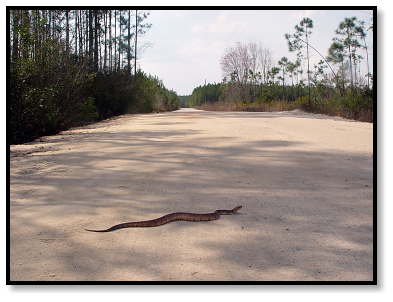
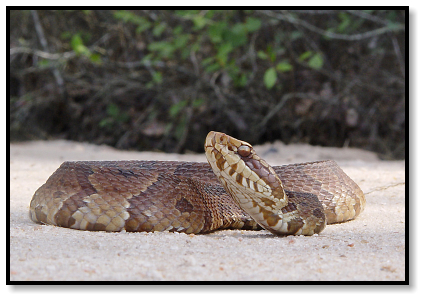
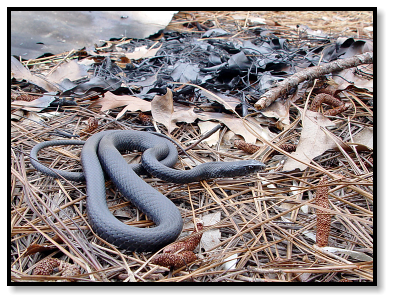
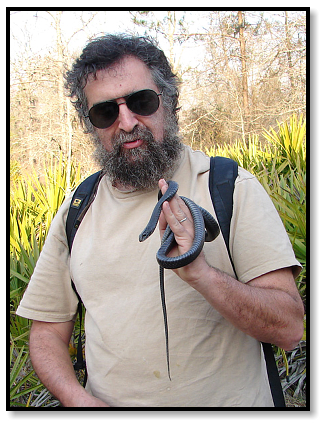
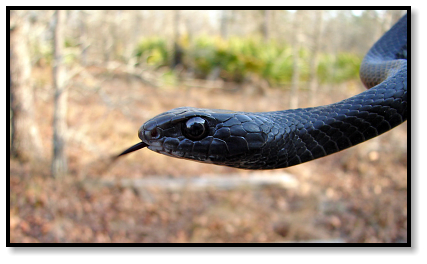
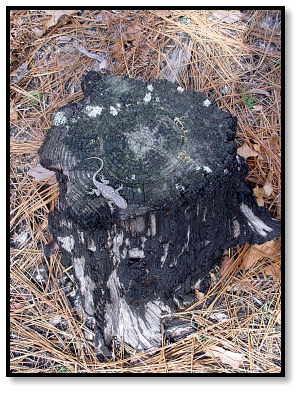
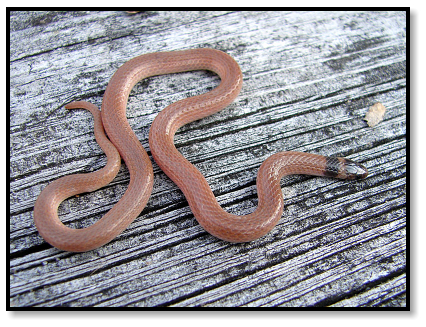
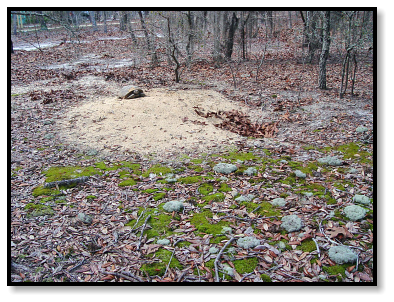
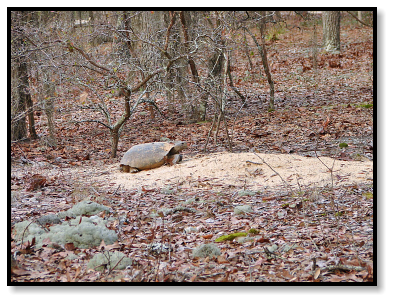
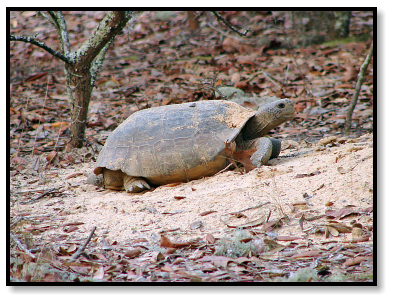
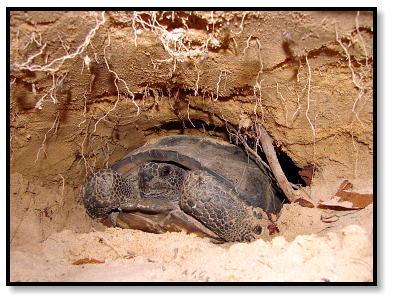
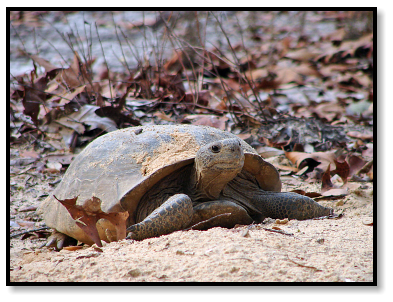
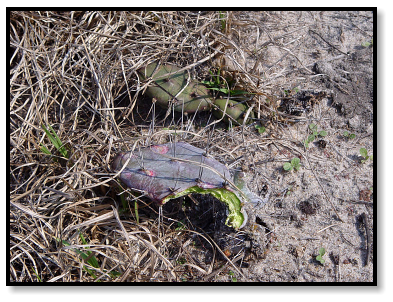
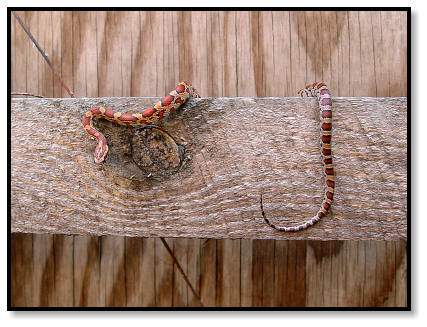
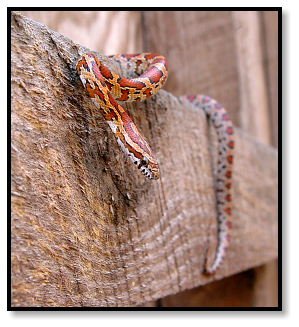
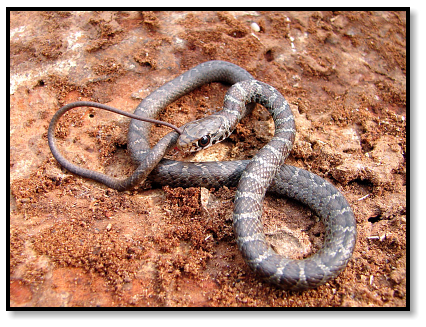
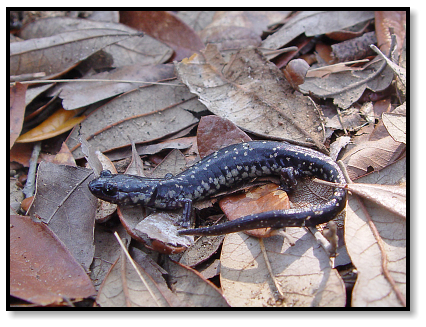
Northern Black Racer
Coluber constrictor constrictor
Eastern Fence Lizard
Sceloporus undulatus
Southeastern Crowned Snake
Tantilla coronata
Eastern Cottonmouth Moccasin
Agkistrodon piscivorus
Gopher Tortoise
Gopherus polyphemus
Slimy Salamander
Plethodon glutinosus
Corn Snake
Elaphe guttata







